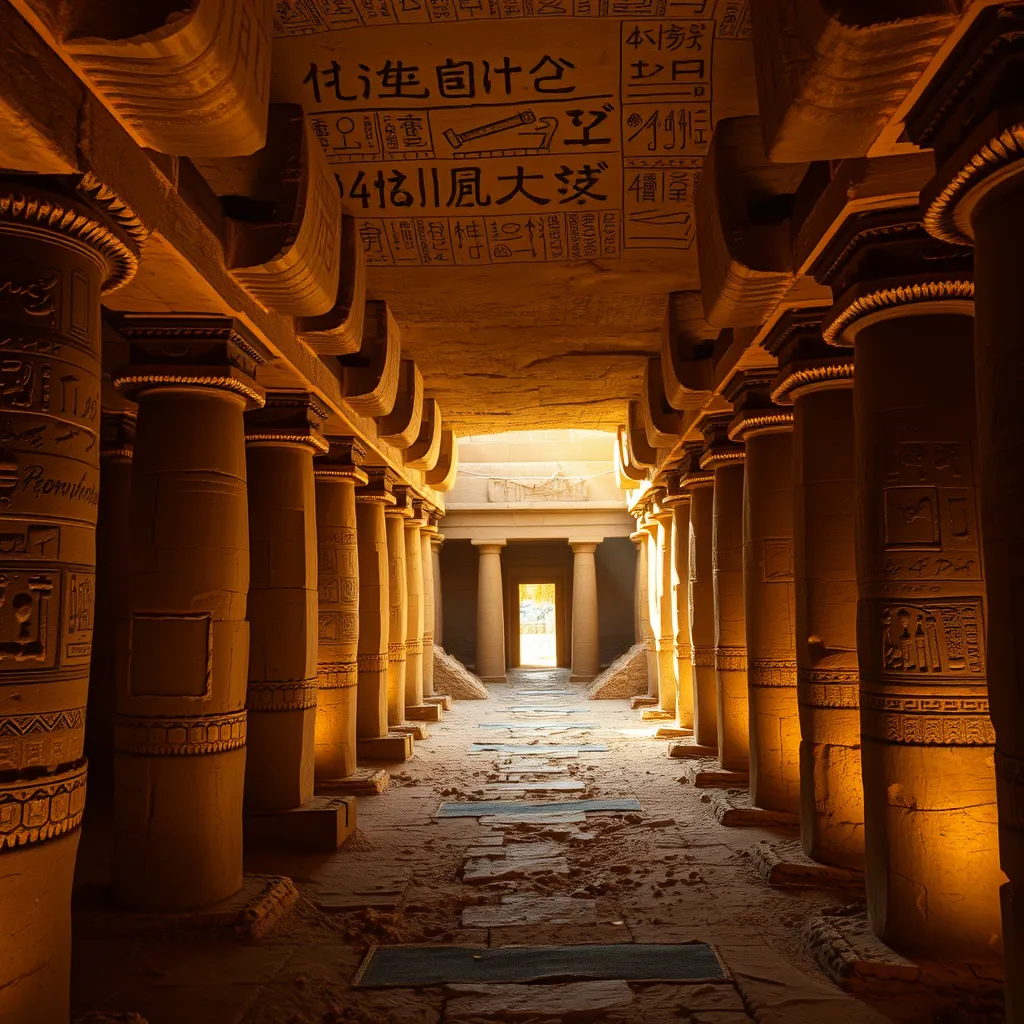The Valley of the Kings: A Journey Through the Tombs of the Pharaohs
I. Introduction
The Valley of the Kings, located on the west bank of the Nile near Luxor, Egypt, is one of the most significant archaeological sites in the world. This valley served as the final resting place for numerous pharaohs of the New Kingdom, a period that spanned from approximately 1550 to 1070 BCE. The importance of the Valley of the Kings lies not only in its role as a royal burial site but also in the wealth of history and culture it encapsulates. This article aims to explore the tombs within the valley, their significance, and the fascinating stories they tell about ancient Egyptian civilization.
II. Historical Context
The New Kingdom of Egypt marked a time of great power and wealth. Pharaohs such as Ramses II and Tutankhamun ruled over a flourishing civilization that engaged in extensive trade, military conquests, and monumental building projects. Central to their reign was the belief in the afterlife, leading to elaborate burial practices designed to ensure a safe passage to the next world.
Originally, pharaohs were buried in pyramids, but during the New Kingdom, the decision was made to move their tombs to the more secluded Valley of the Kings. This shift was motivated by a desire for secrecy and protection against tomb robbers, as pyramids had become targets for looting.
III. Geographical Significance
The Valley of the Kings is situated in a desert landscape, surrounded by rugged mountains. This natural setting provided significant defenses against potential intruders, enhancing the security of the tombs buried within its confines. The valley itself is relatively narrow and consists of several tombs carved into the limestone cliffs.
In comparison to other burial sites in ancient Egypt, such as the Giza pyramids, the Valley of the Kings offers a more concealed and strategic location. This choice of burial site reflects the evolving practices and beliefs of the ancient Egyptians regarding death and the afterlife.
IV. Notable Tombs and Their Discoveries
Among the many tombs in the Valley of the Kings, several stand out due to their historical significance and the treasures they contained:
- Tomb of Tutankhamun: Discovered in 1922 by Howard Carter, this tomb is famous for its wealth of artifacts, including the iconic golden mask of the young pharaoh. The discovery sparked global interest in ancient Egypt.
- Tomb of Ramses II: Known for its grand architectural features, this tomb showcases impressive carvings and monuments. Ramses II, often regarded as one of Egypt’s greatest pharaohs, left a significant mark on the cultural landscape of his time.
- Tomb of Seti I: Renowned for its intricate wall paintings and detailed inscriptions, this tomb offers insight into the artistry and religious beliefs of ancient Egypt. The depictions within the tomb highlight the importance of the afterlife and the pharaoh’s journey to eternity.
V. Art and Symbolism in the Tombs
The tombs of the Valley of the Kings are adorned with elaborate wall art and hieroglyphs that convey deep cultural and religious significance. These artistic decorations serve multiple purposes:
- They depict scenes from the pharaoh’s life and the afterlife journey.
- Hieroglyphs convey prayers and spells intended to protect the deceased in the afterlife.
- Common themes include the journey through the underworld, rituals, and the divine nature of the pharaoh.
Art in these tombs illustrates the ancient Egyptians’ beliefs about immortality and the importance of the afterlife, showcasing their understanding of existence beyond death.
VI. Archaeological Discoveries and Challenges
The Valley of the Kings has been the focus of numerous archaeological expeditions, leading to significant discoveries that have expanded our understanding of ancient Egyptian history. Major findings include:
- The untouched tomb of Tutankhamun, which provided a wealth of artifacts.
- Numerous royal mummies that have been studied to reveal insights into ancient burial practices and health.
However, the preservation and conservation of these tombs pose significant challenges. Factors such as climate change, tourism, and vandalism threaten the integrity of these ancient sites. Modern technologies, including 3D scanning and digital mapping, are now being employed to aid in the exploration and preservation of the Valley of the Kings.
VII. Cultural Impact and Legacy
The Valley of the Kings has left an indelible mark on popular culture and the global imagination. Films, literature, and art frequently draw inspiration from the mystique of ancient Egypt and its monumental tombs. The ongoing fascination with ancient Egyptian civilization continues to drive interest in archaeological research and tourism.
Educational programs and guided tours provide opportunities for visitors to engage with this rich heritage, fostering a greater appreciation for the complexities of ancient Egyptian society. The valley remains a vital link to understanding humanity’s past and the cultural legacies that shape our present.
VIII. Conclusion
In summary, the Valley of the Kings stands as a testament to the grandeur of ancient Egyptian civilization and its beliefs surrounding death and the afterlife. The tombs within this remarkable site offer a glimpse into the lives of pharaohs who once ruled a mighty empire. As we reflect on its historical significance, the Valley of the Kings reminds us of the importance of preserving our shared heritage and the stories that connect us across time.
Exploring the Valley of the Kings is not merely a journey through tombs; it is an invitation to appreciate the intricate tapestry of ancient Egyptian culture and its lasting impact on the world today.




